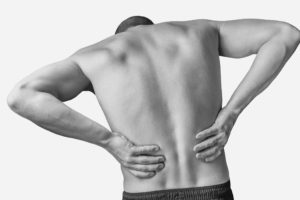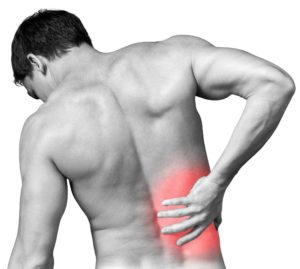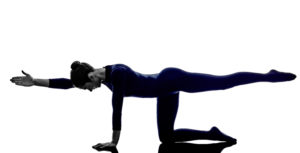Got Back Pain? Now What?

Chronic pain, affecting approximately 100 million people each year, is classified as pain persisting for 12 weeks or more.
Low back pain is the most common kind of chronic pain complaint.
When the body’s pain signals keep firing in the nervous system for this length of time, it can have a draining effect on a person’s quality of life—physically, mentally, and spiritually.
In the United States, 8 out of 10 people will experience low back pain at some time in their lives.
Low back pain is the second most frequent reason for doctor visits, next to the common cold, and it is the leading cause of job-related disabilities.
When sudden and acute back pain strikes, it can cause intense shooting or stabbing pain that dramatically limits movement.
This is often to the point that standing upright can feel like a Sisyphean task—repeatedly rolling the same rock up the hill without any relief.
This pain can last anywhere from a few days to weeks.
Subacute back pain, pain lasting 4 to 12 weeks, is generally the result of a strained or pulled muscle—that’s when the muscle or tendon is ripped or torn, from over-stretching it, or by pulling the muscle in one direction while it is contracting in the other direction.
Muscle strains are typically caused by a fall, careless lifting technique, poor posture, or a sudden movement.

When the muscles are strained or torn, the area around the muscles become inflamed.
This inflammation leads to back spasms, and it is the back spasms that can cause both acute low back pain and difficulty moving.
Finding a quick fix for your back pain can be a slippery slope, due to all the back pain myths and misconceptions.
One truth that is certain is that regular exercise prevents back pain. And doctors might recommend exercise for people who have recently hurt their lower backs.
The doctors will usually suggest that the person start with gentle movements and gradually build up the intensity.
Once the immediate pain goes away, an exercise plan can help keep it from coming back.
The National Institute of Neurological Disorders and Stroke (NINDS) says on its website that, “Exercise may be the most effective way to speed recovery from low back pain and help strengthen back and abdominal muscles. . . . Maintaining and building muscle strength is particularly important for persons with skeletal irregularities.”

According to health researcher Chris Maher at the University of Sydney in Australia, after analyzing 21 global studies (involving more than 30,000 participants) on how to treat and prevent lower back pain, those who use a combination of exercise and back pain education reduced the risk of repeated low back pain in the year following an episode between 25 and 40 percent.
It didn’t really matter what kind of exercise—core strengthening, aerobic exercise, or flexibility, and stretching.
“What we do understand about the back is that the more you use it, the more likely you are to keep it strong, fit and healthy,” says Maher.
Below you can see the specific back pain exercise routines that helped fix my back pain problem when I injured it one hot summer day installing a 60-pound Friedrich air conditioner.
All the illustrations and exercise descriptions can be found in my book, The Essential Lower Back Pain Exercise Guide.

How I Reversed My Severe Low Back Pain in only 3 weeks, without Surgery, Physical Therapy or Pain Pills
15-Minute Doctor Recommended Exercise for Lower Back Pain Sciatica
This is the exact fifteen-minute routine my primary care physician (who also happens to be an osteopath) prescribed and printed for me to do every day to help get me out of pain, especially if I was short on time.
7 Resistance Band Exercises for Lower Back Pain
Hip abductor weakness has been implicated as a factor in chronic low back pain.
A painful or weak gluteus medius muscle, the muscle in the buttocks that allows you to laterally rotate the hip, will force a person to lean toward the involved side to place the center of gravity over the hip.
This can ultimately lead to abnormal loading of the lumbar spine and subsequent low back pain.
The following seven resistance band exercises will help to stabilize and strengthen the muscles around your hip, which should prove very useful in soothing lower back pain.
Click here for Recommended Resistance Bands
Before You Roll Out of Bed . . .
When your alarm clock rings or buzzes in the morning, do you leap out of bed, as if you’ve been struck by lightning, or do you hit the snooze button?
Your answer should be, “Stretch my back!”
The “greatest incidence of slipped discs occurs within 30 to 60 minutes after we wake up.”
It’s recommended that you stretch out your back before you ever leave the bed, instead of falling back to sleep, which interrupts your natural sleep pattern, counteracting sleep’s restorative values.
The following four stretches can make a powerful difference in preventing back pain and keeping you limber throughout the day.
